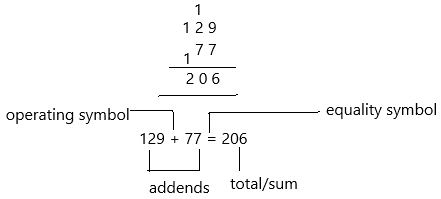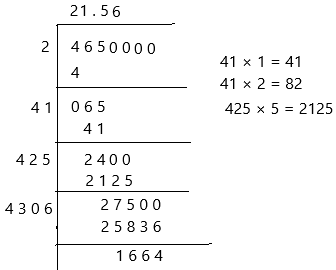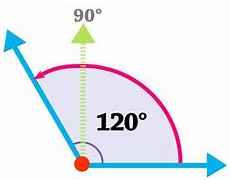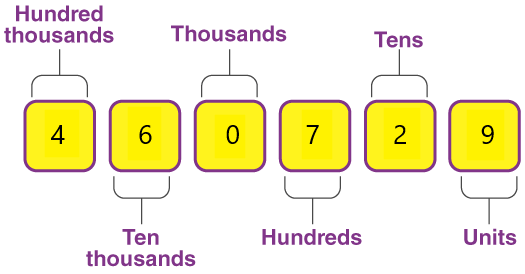By accessing our 180 Days of Math for Fifth Grade Answers Key Day 169 regularly, students can get better problem-solving skills.
180 Days of Math for Fifth Grade Answers Key Day 169
Directions: Solve each problem.
Question 1.

Answer:
The addition is the term used to describe adding two or more numbers together. The addition is denoted using the plus sign ‘+‘ such as the addition of 3 and 3 can be written as 4 + 4. Also, the plus sign (+) can be used as many times as required, such as
4 + 4 + 4 + 4.

Therefore, the answer is 206.
Question 2.
82 × 43 = ___________
Answer:
In mathematics, multiplication is a method of finding the product of two or more numbers. It is one of the basic arithmetic operations, that we use in everyday life. The major application we can see in multiplication tables.
In arithmetic, the multiplication of two numbers represents the repeated addition of one number with respect to another. These numbers can be whole numbers, natural numbers, integers, fractions, etc. If m is multiplied by n, then it means either m is added to itself ‘n’ number of times or vice versa.
The formula for multiplication:
The multiplication formula is given by:
Multiplier × Multiplicand = Product
– The multiplicand is the total number of objects in each group
– A multiplier is the number of equal groups
– Product is the result of multiplication of multiplier and multiplicand

Therefore, the answer is 3256.
Question 3.
![]()
Answer:
The square root of a number is defined as the value, which gives the number when it is multiplied by itself. The radical symbol √ is used to indicate the square root. For example, √9 = 3. The radical symbol is also called a root symbol or surds. If a number is a perfect square, we can easily find the square root of the number. If the given number is not a perfect square number, the square root can be found using the long division method.
Here we will show you how to calculate the square root of 465 using the long division method with one decimal place accuracy.

Thus, the answer is on the top. The square root of 465 with one digit decimal accuracy is 21.56. Did you notice that the last two steps repeat the previous two steps. You can add decimals by simply adding more sets of 00 and repeating the last two steps over and over.
The above-given question is 39 square root of 465
The square root of 469 is 21.56
Now multiply 39 and 21.56
Thus, 39 * 21.56 = 840.84
Question 4.
What is the number 1,000 before 57,299?
Answer: 56,299
In the question, before number is asked so we have to subtract.
we should subtract 1000 from 57,299 then we get the number before the number 1000.
57,299-1000=56,299
Question 5.
\(\frac{3}{5}\) + \(\frac{1}{5}\) = ___________
Answer:
\(\frac{3}{5}\) can be written as 3/5
\(\frac{1}{5}\) can be written as 1/5
Now add the fractions:
= 3/5 + 1/5
= 3 + 1/5
= 4/5
Therefore, the value of \(\frac{3}{5}\) + \(\frac{1}{5}\) = 4/5
Question 6.
1 • 3 + 2 • 5 = __________
Answer:
In mathematics, multiplication is a method of finding the product of two or more numbers. It is one of the basic arithmetic operations, that we use in everyday life. The major application we can see in multiplication tables.
In arithmetic, the multiplication of two numbers represents the repeated addition of one number with respect to another. These numbers can be whole numbers, natural numbers, integers, fractions, etc. If m is multiplied by n, then it means either m is added to itself ‘n’ number of times or vice versa.
The formula for multiplication:
The multiplication formula is given by:
Multiplier × Multiplicand = Product
– The multiplicand is the total number of objects in each group
– A multiplier is the number of equal groups
– Product is the result of multiplication of multiplier and multiplicand
The value of 1 • 3 = 3
The value of 2 • 5 =10
Now add both the values. Assume it X.
X = 3 + 10
X = 13
Therefore, the answer is 13.
Question 7.
2x + 45 = 163
x = __________
Answer:
The above-given expression:
2x + 45 = 163
Now get 45 to the left-hand side then the expression will be:
2x=163-45
2x=118
x=118/2
x=59
Now submit the x value in the given equation.
2x + 45 = 163
2(59)+45=163
118+45=163
163=163
Hence, answer is verified
Question 8.
3km = ________ m
Answer:
To calculate 3 Kilometers to the corresponding value in Meters, multiply the quantity in Kilometers by 1000 (the conversion factor). In this case, we should multiply 3 Kilometers by 1000 to get the equivalent result in Meters:
3 Kilometers x 1000 = 3000 Meters
3 kilometres is equal to 3000 metres.
Question 9.
Use a protractor to draw an obtuse angle.
Answer:
In Mathematics, “an obtuse angle is an angle which is greater than 90° and less than 180 degrees.”. In other words, an obtuse angle is between a right angle and a straight angle.

Take a protractor and measure the angles that are greater than 90 and less than 180 degrees and draw the angles.
Question 10.
True or false?
The median is the middle value in an ordered set of values.
Answer: True.
The median of a set of data is the middlemost number or centre value in the set. The median is also the number that is halfway into the set. To find the median, the data should be arranged, first, in order of least to greatest or greatest to the least value. A median is a number that is separated by the higher half of a data sample, a population or a probability distribution, from the lower half. The median is different for different types of distribution.
For example, the median of 3, 3, 5, 9, 11 is 5. If there is an even number of observations, then there is no single middle value; the median is then usually defined to be the mean of the two middle values: so the median of 3, 5, 7, 9 is (5+7)/2 = 6.
Question 11.
Imagine that you write each letter of the word ARIZONA on individual cards. You shuffle them, turn them facedown on a table, and turn over the top card. What is the probability of turning over an A?
Answer:
Probability is a mathematical term for the likelihood that something will occur. It is the ability to understand and estimate the possibility of a different combination of outcomes.
The probability formula is defined as the probability of an event occurring equally to the average number of positive outcomes and the total number of outcomes.
Possibility of incident P (E) = Number of positive outcomes / Total number of outcomes. This is a basic formula. But there are other additional formulas for different situations or events.
The above-given word: ARIZONA
The total number of outcomes=7
The possible outcomes of ‘A’=2
According to the formula:
P(turning over A)=2/7
Therefore, the probability is 2/7.
Question 12.
Write the number that has the following place values:
7 in the hundreds place
9 in the one’s place
0 in the thousands place
4 in the hundred thousand place
2 in the tens place
6 in the ten thousand place
Answer: 460,729
Place value describes the position or place of a digit in a number. Each digit has a place in a number. When we represent the number in general form, the position of each digit will be expanded. Those positions start from a unit place or we also call it one’s position. The order of place value of digits of a number of right to left is units, tens, hundreds, thousands, ten thousand, a hundred thousand, and so on.
